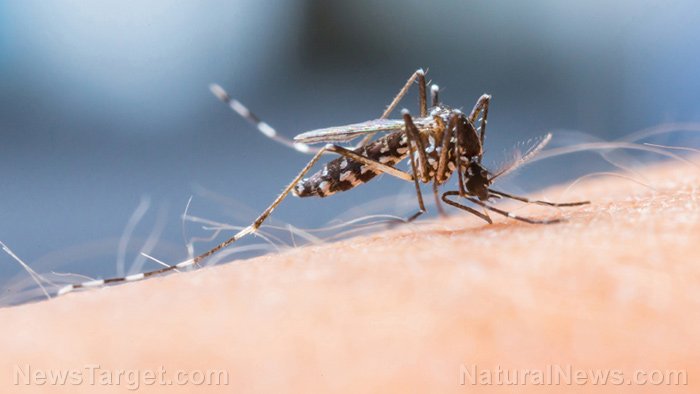Bird flu is evolving in Chinese poultry; the WHO says avian flu has spread to humans for the first time
10/18/2018 / By Edsel Cook

The first diagnosed human case of H7N4 bird flu has appeared in eastern China, reported a New Scientist article. Chinese authorities have confirmed that a woman from Jiangsu province contracted this particular avian influenza virus.
The 68-year-old patient developed symptoms on December 25, 2017. She entered the hospital for treatment on January 1, and was medically cleared for release on January 22.
“She had contact with live poultry before the onset of symptoms,” reported a spokesperson for Hong Kong’s Centre for Health Protection (CHP) regarding the now-recovered bird flu patient.
“According to a report from the Chinese center for disease control and prevention, upon analysis, the genes of the virus were determined to be of avian origin.”
The CHP warned Hong Kong residents who needed to visit the mainland or other affected areas to avoid wet markets, live poultry markets, or farms.
Travelers were also advised to keep their distance from backyard poultry, freshly slaughtered animals, and droppings. If they had to visit any place with live poultry, they were required to strictly follow personal and hand hygiene practices.
“Travelers returning from affected areas should consult a doctor promptly if symptoms develop, and inform the doctor of their travel history for prompt diagnosis and treatment of potential diseases,” the CHP alert recommended.
Hong Kong reported the first human cases of bird flu in 1997, when the H5N1 virus killed six people. The semi-autonomous city is a high-risk area for potential pandemics due to its population density and its regional and international transport hubs. (Related: World health chief stokes the panic fires by warning that a catastrophic global pandemic is imminent… humanity WIPEOUT foreshadowed?)
Flu viruses can combine to create new diseases
According to Dr. Bettina Fries of Stony Brook Medicine Division of Infectious Diseases, any instance of a human contracting a bird flu virus is cause for serious concern.
“There would not be any preexisting immunity since the virus is new for humans,” she warned.
Dr. Fries explained that flu viruses could recombine their genes to form new strains that can bypass immune systems and resist standard medical treatments.
“The viruses recombine/mix their genomes and you have a new flu virus half human, half bird flu virus. The swine flu outbreak was a strain with some swine and some human flu,” she said.
“What keeps us safe at the moment from bird flu is that they rarely infect humans. Recombination of virus (human and bird flu) could change that and we could find ourselves in a pandemic with a rapidly spreading virus and no preexisting herd immunity, no vaccine.”
Human cases of avian flu are growing
The World Health Organization (WHO) identified the H5, H7, and H9 viruses as the most common sub-types of avian influenza that infect human beings. The H7N4 virus which infected the Chinese woman is one of the nine known sub-types of H7, which usually affect poultry like chickens, ducks, and geese.
Human cases of H7 bird flu are relatively uncommon but not unknown. Victims can experience serious respiratory illnesses or even die.
While the Jiangsu case is the first time the H7N4 strain has infected a human, earlier outbreaks attributed to different bird flu viruses have led to significant loss of life. The H5N1 virus that started in Hong Kong has spread to Europe and Africa until it achieved endemic status in the poultry population of several countries.
Then there’s the highly virulent H7N9 virus. First appearing in China in 2013, the virus has spread across the country’s huge population of poultry. More than 1,500 human cases have been reported, as well as a number of deaths.
Learn more about the latest on communicable diseases at Outbreak.news.
Sources include:
Tagged Under: avian flu, avian influenza, bird flu, China, flu pandemic, H7N4, Hong Kong, outbreak, viral pandemic, virus




















